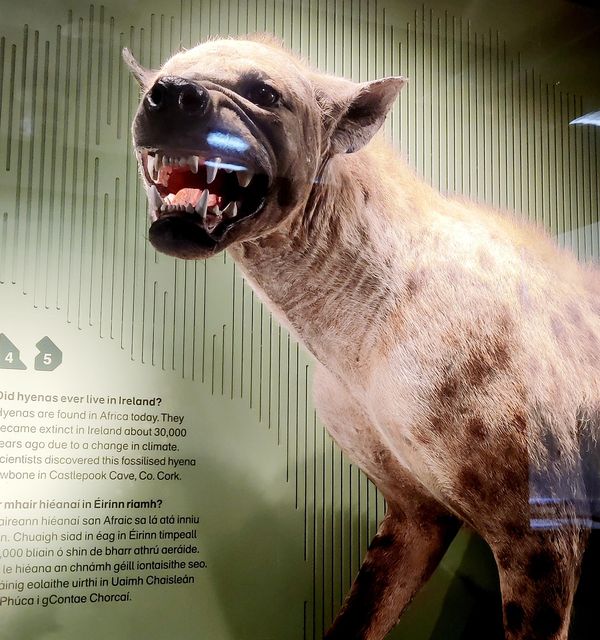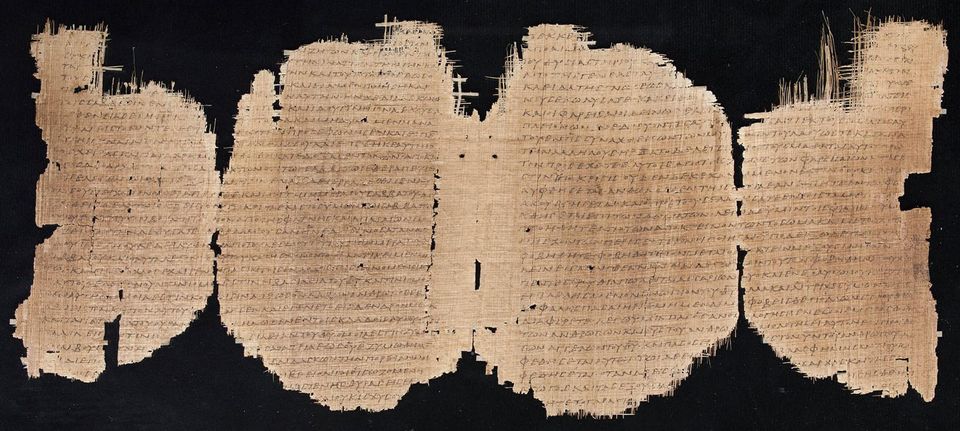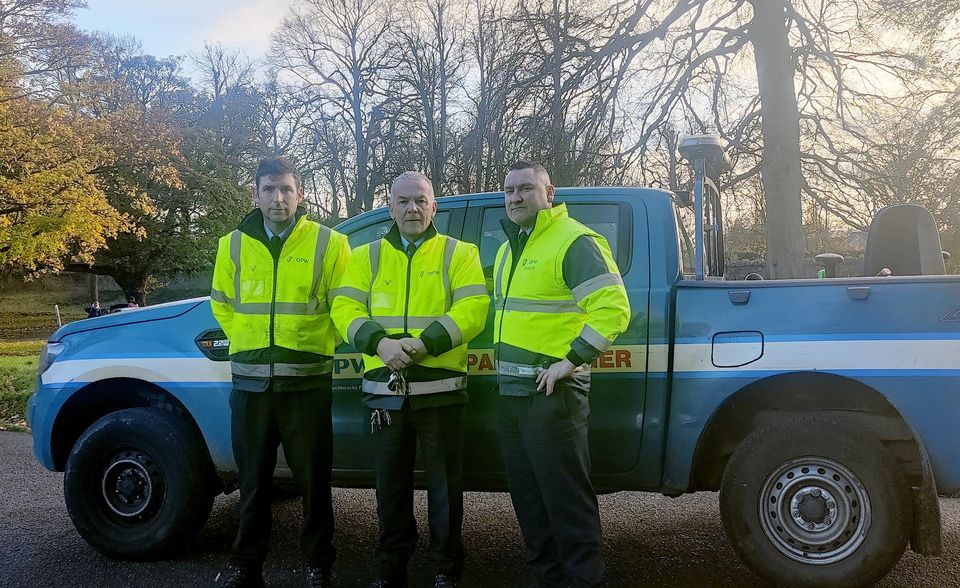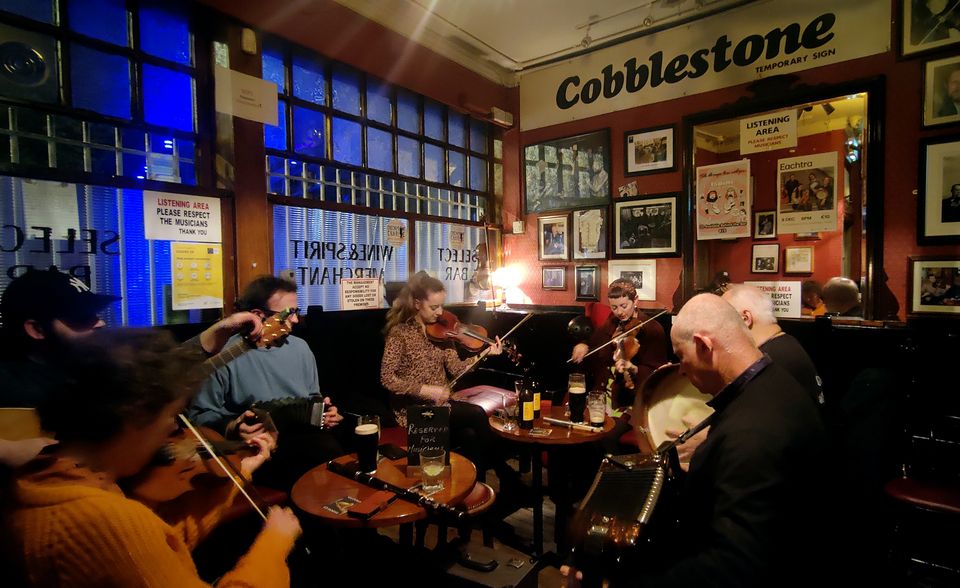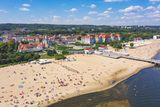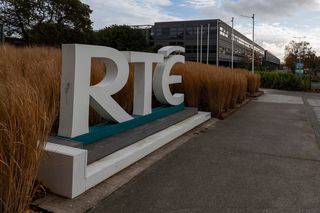Music, deer and culture: How to spend a day in Dublin for free
Dublin is often criticised as an expensive city to visit. But there are still lots of free attractions to keep you busy, as Azmia Riaz found out
Deer crossing in front of the Papal Cross in Dublin's Phoenix Park. Pic: Marc O'Sullivan
If you’ve ever Googled ‘Free things to do around Dublin’, I see you. Christmas time is not particularly kind on your wallet, so my task for the day was to sample the best of what Dublin has to offer … without spending a cent.
National Gallery of Ireland
Here’s some friendly advice to begin with: do not try sneaking a coffee into the National Gallery. You’ll spend the rest of your day trying to prove you’re not a Just Stop Oil protester.
National Gallery of Ireland ... just don't bring a coffee cup!
The gallery is currently hosting Still Moments, a free exhibition of the work of Estella Solomon, on show until January 8.
Curator Niamh MacNally runs visitors through what life was like for Estella back in 1910 – making you wonder what Dublin looked like from the artist’s studio in Pearse Street, which also doubled as a safe house for revolutionaries during the War for Independence.
“Much of her work had to be destroyed to protect the subjects, as the studio was often raided by troops for her support of Irish independence,” Ms MacNally says.
“But some of the portraits that survived have managed to capture the leading figures from our revolutionary struggle.”
Photograph of artist Estella Solomons in her Pearse Street studio
Estella’s black and white paper etching of a Dublin alleyway is quickly replaced by the real-life colours of Merrion Street, as you make your way to the National Museum of Ireland – Natural History.
Next thing I know, I’m in the ‘Dead Zoo’, staring a frozen hyena in the eye.
National Museum of Ireland
Built in 1856, this ‘museum of a museum’ houses over 10,000 exhibits of mammals, birds, fish and insects which are native to Ireland, and a few others from around the world.
Only the first floor of the 100-year-old building is open to visitors at the moment, as work continues on reconstructing the roof. Groups are requested to make bookings.
“We had to literally take down the skeleton of a whale in order to work on the roof!” said Brian Houlihan, marketing executive at the museum. “We moved the giraffe and the rhino and a host of other larger artefacts to reconstruct it.”
A hyena among the animals at the 'Dead Zoo'
Although admissions are limited, visitors are encouraged to visit the Archaeology Museum in Dublin 2 – and the world-famous ‘bog bodies’ exhibition – or the Decorative Arts & History Museum in Dublin 7, which is hosting ‘Imaging Conflict’, photographs from the country’s revolutionary era.
Chester Beatty Library
A highlight of my complimentary crash course in culture came courtesy of Jill Unkel, Curator of Western Collections at the Chester Beatty Library.
She began working on First Fragments, her exhibition of biblical papyrus from Ancient Egypt, during the pandemic. It opened on October 28 and will run well into the next year.
The 11 manuscripts date back to the second century AD and rustle up a stunning interpretation of what early Christian writing and bookmaking would have looked like.
“We are looking at the pages through the lens of people to make it more accessible,” Jill said.
First Fragments is divided into six sections and includes a family trail for younger audiences to look out for signs of little geckos, an Egyptian native, around the exhibit.
Biblical papyrus from the First Fragments exhibitions at Chester Beatty library
“With every gecko you find, you’re looking for the agents of destruction,” Jill said.
“These are the various things that can cause damage to ancient artefacts like chemical damage, environmental damage and pests. You have to figure that out to prevent future damage.”
Phoenix Park
Winding up the art and history tour, I headed to the deer keeper’s lodge at Phoenix Park where Terry Moore warmly welcomed me to his terrain. We packed into a jeep with park rangers Stephen Baxter and Paddy Crowe.
I can’t guarantee this ride along is available for all park visitors, but Terry offers some words of advice: “The walking is free, the fresh air is free!”
Although countless blogs on the internet swear by it, the park rangers warn that feeding the deer is a great risk for the animals themselves. Signs have been put up around the area, but people rarely pay attention.
“Fifty metres away from the deer!” Stephen’s staticky voice sounds through his microphone, pulling onlookers away from a gathering of the animals.
“The park is their home, all the food they need is the grass they graze on. Being fed snacks and sweets is not good for their stomachs. Now they go in search of food because of how often tourists feed them,” he said.
Terry Moore with park rangers Stephen Baxter and Paddy Crowe
I kept my 50-metre distance to admire the herd before we’re on our way again.
We steer through the People’s Garden, which swells with flowers in summer, past the pond dotted with all kinds of water fowl, and Terry is delighted to find four cygnets that had gone missing from the pond the previous day.
Áras an Uachtaráin
At the visitor’s centre, you can find guide Lief Barry who leads some of the free tours around the park – including guided walks of Áras an Uachtaráin, Magazine Fort, Ashtown Castle, Grangegorman Military Cemetery and Arbour Hill Cemetery.
Available on a first-come, first-serve basis, the tours begin at 9.30am on Saturdays. Visitors are advised to ring a day ahead to be sure. Lief’s personal favourite tour of the president’s house will resume in late January.
“The Áras an Uachtaráin tour takes you through the history of the house and all the presidents who have lived in it. We take a look at the state reception rooms, the dining room and drawing room. If you’re really lucky, we also get a glimpse into the president’s study,” he said.
If there’s a rugby match on, you might just run into ‘Miggle D’ himself returning to or leaving the house.
Free tours
On the walk back from Phoenix Park to the city centre, I played a game of scavenger hunt with Jennifer Petoff, better known as Dr J on social media.
The US citizen moved to Dublin in 2010 and has traced the most interesting doors around the city for people to find, using #FindDublinDoors.
“The doors give the city a huge part of its charm,” she said. “When I first moved, I found that spotting doors of different colours was a good way to get some exercise. You can take the kids out and play a game of door bingo!”
Set up in 2018, Alternative Dublin hosts nine walks and tours around Dublin, three of which are free and run on a donation system. They cover true crime, street art, LGBTQ+ history and a range of other iconic city attractions.
Eoin Conlin, Events and Tourism Manager, hosts the Sounds of the City Tour. He plays music on a portable sound system as he takes people through Dublin’s musical hotspots that celebrate everyone from The Dubliners and Thin Lizzy, to the city’s latest buskers.
“It’s the full gamut of Irish music. I tell stories about our best musicians and try to make it as accessible as possible,” he said.
“Our tours are not like other generic history tours and people react well to that. We get a lot of locals who join us and say they’ve learned things they’d never known about Dublin.”
Traditional Music
No day around Dublin is complete without some trad music. At The Cobblestone, you’ll find it playing seven days a week. At 6.30pm on a Monday, you can find the musical duo Ispíní Na Héireann playing among many other traditional musicians.
Last year, the pub received widespread support from patrons around Dublin when a large hotel was planned on the site of the Mulligan family’s pub.
The Cobblestone in Smithfield offers free trad music lessons on Wednesdays
“My grandfather has been playing in here even before our family had anything to do with the pub,” Tomás Mulligan said.
“There’s a great feeling in here these days. I suppose we all realised how important it is when it was under threat.”
On Wednesday nights, the back room of the pub also offers free lessons in traditional Irish music for anyone who is looking to learn. While music plays as you walk in, a fiddle player leads lessons on the bodhrán, banjo and the flute in the back.
“I don’t think people come to Dublin solely to visit distilleries and breweries, a good chunk of people come here to experience our music,” Tomás said.
“From the outside looking in, the Irish pub is a very strong institution, and the music is the strongest part of it.”
That’s a day wrapped up in Dublin without costing a single cent. But if you’re happy you’ve saved enough money, maybe grab yourself a pint to top it all off!
Join the Irish Independent WhatsApp channel
Stay up to date with all the latest news

